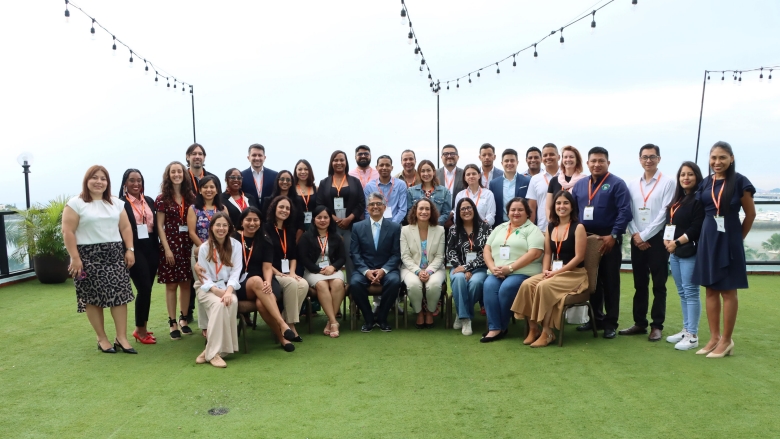Human-wildlife conflict is increasing across the globe and negatively impacting both endangered species and people. Habitat loss, climate change, competition over natural resources like land and water and social factors are drivers of the intensity and scale of human-wildlife conflict. To manage and mitigate human-wildlife conflict, projects in the Global Wildlife Program (GWP) have expressed the need to build the capacity of protected area authorities and conservation practitioners to engage with media to influence public perceptions of human-wildlife conflict and promote a more balanced narrative on the complexity of the issue.
The GWP, funded by the Global Environment Facility and led by the World Bank, in partnership with the Panama Ministry of Environment and Yaguara Panama Foundation, executing agencies of the GWP Panama project, organized a regional, technical workshop on media engagement for human-wildlife conflict from September 16-17, 2024, in Panama.
- OVERVIEW
- AGENDA
- RELATED
The workshop brought together 40 participants from 10 countries in Latin America and the Caribbean. This included government representatives from Belize, Colombia, Ecuador, Mexico, Panama, and Paraguay from the GWP; and Brazil, Guyana, Peru, and Suriname from the Amazon Sustainable Landscapes Program, as well as United Nations and non-governmental organization technical partners.
The workshop included ten sessions with interactive discussions focused on understanding the media landscape and human-wildlife conflict reporting across the region. Participants discussed topics related to the importance of building a relationship with the media sector, collecting and promoting written and visual content related to human-wildlife conflict solutions, and challenges the governments faced in tackling misinformation, including with social media.
The workshop's objective was to enhance understanding on how to effectively work with media (journalists, reporters, TV personnel, etc.) to promote a balanced account ofnsational reporting that results in misguided mitigation measures; and environmental news coverage that focuses only on the negative aspects of conflict. human-wildlife conflict incidences. The workshop increased capacity for the use of communication tools and facilitated knowledge exchange between countries who face similar challenges. For projects in the GEF-8 phase, this workshop helped provide ideas that could be included in an overall HUMAN-WILDLIFE CONFLICT strategy.
Summary
Hasita Bhammar, Human-wildlife Conflict and Coexistence Lead, Global Wildlife Program, welcomed the participants and introduced Joelle Dehasse, Operations Manager, Panama, World Bank, who provided welcoming remarks and noted the importance of managing human-wildlife conflict as a means to safeguard vital forest resources for green growth and climate mitigation in the country. Tomás Fernández, Director of Protected Areas and Biodiversity, Ministry of the Environment, Government of Panama, delivered the keynote address, noting that even a simple, accurate headline, could change people’s ideas about wildlife conservation.
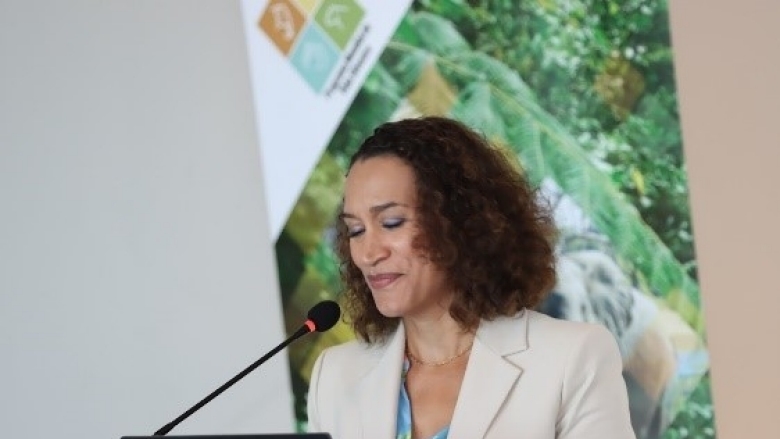
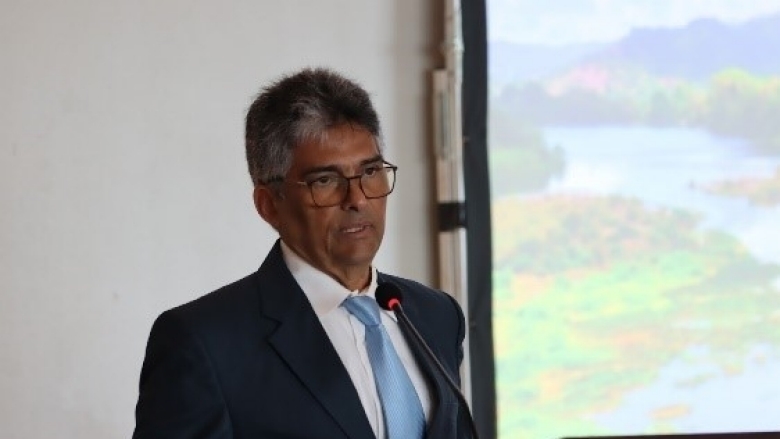
The opening remarks were followed by an overview of the media landscape from a journalist’s perspective. Lead trainer of the workshop and GWP Consultant, Virat Singh, emphasized that the media is a powerful stakeholder in advancing human-wildlife conflict management efforts. The responsibility to report accurately on human-wildlife conflict is equally shared between the conservation and media sectors. Conservation practitioners must take into consideration that it is their role to be proactive by building a professional working relationship with the media, take the initiative to inform and bring stories to them and to train the media on science and conservation if they expect reporting to be accurate and balanced. Media’s portrayal of wildlife vs. the reality of what happens on the ground can only be bridged with continuous engagement.
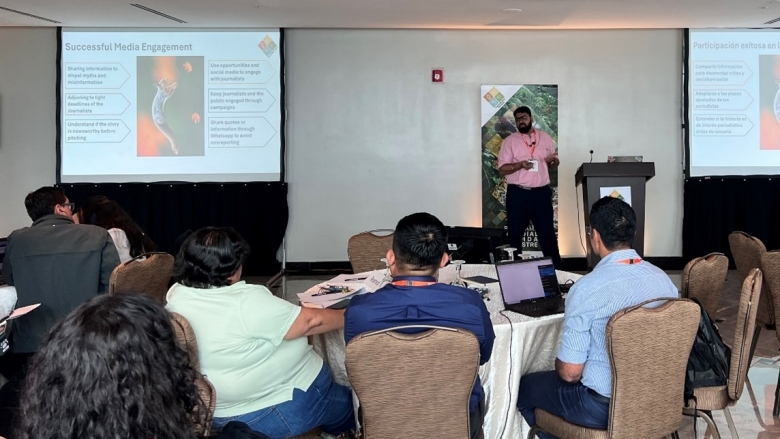
The third session, moderated by Juan Carlos Rodriguez of the United Nations Development Programme, focused on country perspectives including challenges and activities related to media reporting on human-wildlife conflict. The major challenges identified by participants were the rapid spread of misinformation on social media; sensationalism in reporting; lengthy government protocols that delay information sharing, leading to misinterpretation in reporting; public pressure from sensational reporting that results in misguided mitigation measures; and environmental news coverage that focuses only on the negative aspects of conflict.
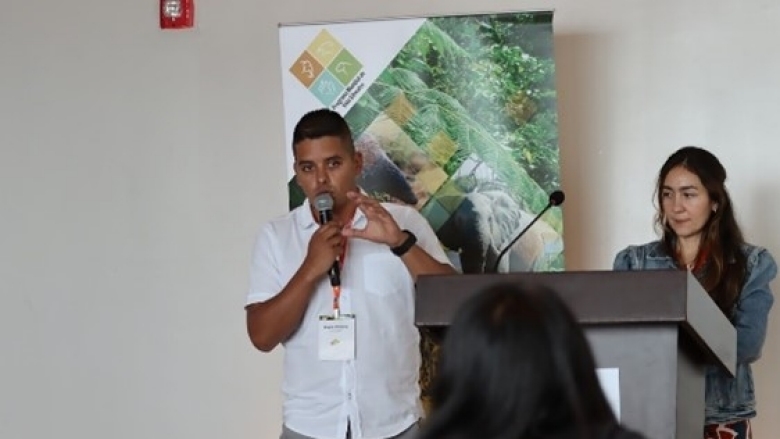
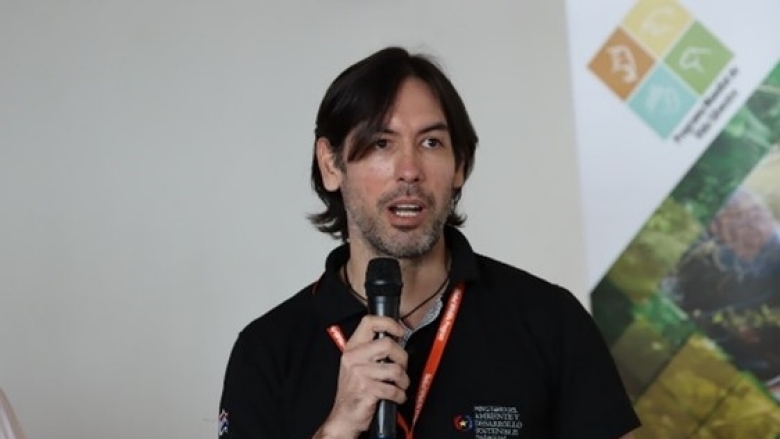
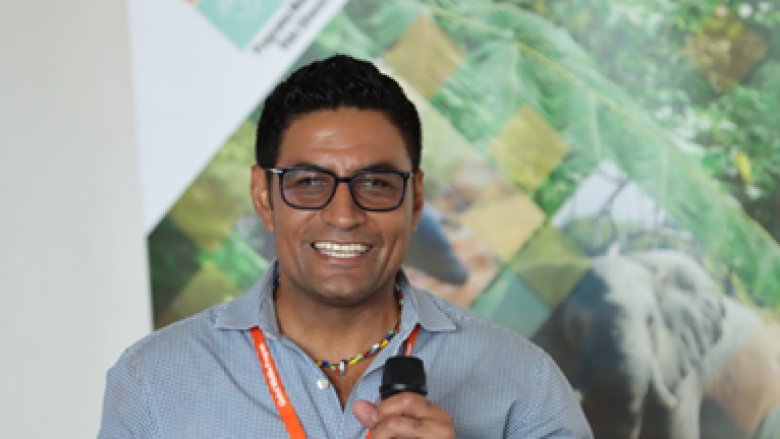
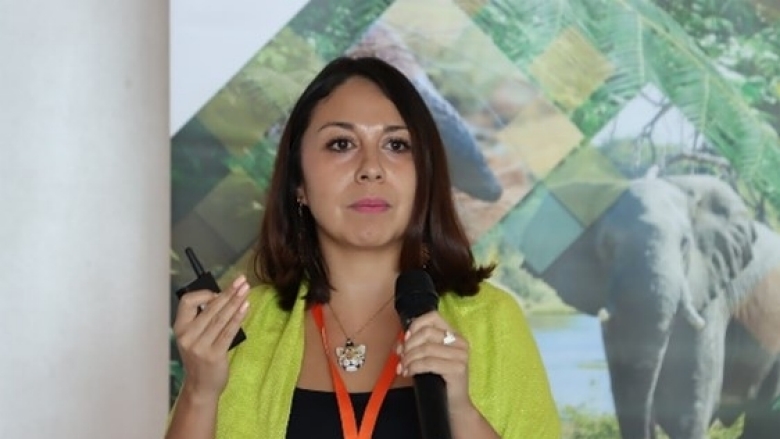
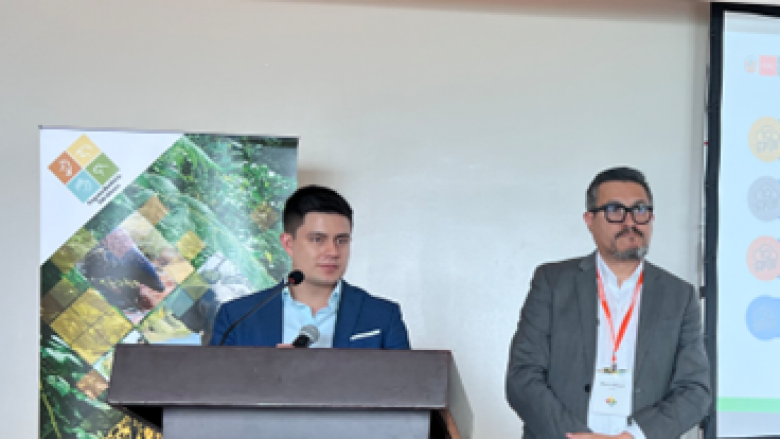
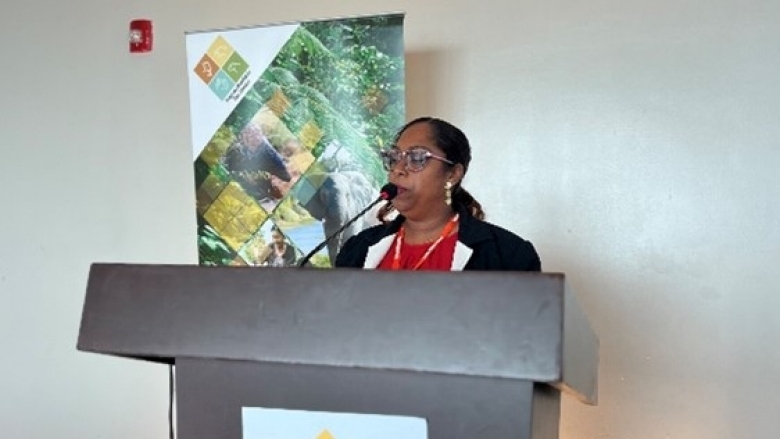
Country presentations on how the media reports on human-wildlife conflict. From top left: Mario Chavez and Lina Garcia, Colombia; Carlos Monges, Paraguay; Ricardo Moreno, Panama; Ivette Ramirez, Mexico; Juan Carlos Rodriguez, UNDP (Moderator); Marco Enciso, Peru; and Ladonna Kissoon, Guyana.
Each country shared their different approaches to engagement. In Mexico and Colombia, the government researches the trends and patterns in reporting to better understand the consumer of the news. In Panama, Yaguara Foundation, in partnership with the Ministry of Environment, provide scientific training and scientific content to spark the media’s interest. In Paraguay, the government regularly communicates with media representatives via WhatsApp. In Peru, they create content focusing on positive perspectives of wildlife conservation and species discovery. Most countries also focus on debunking myths that lead to fear of conflict species.
This session was followed by a short training on media engagement entry points. Participants were told to consider some best practices in choosing the media platform they should choose when promoting content. For example, if they want to promote reports or research findings, then print media or podcasts would be a good choice. If the aim is to get visual content out to dispel myths or raise awareness, then television or social media may be a better option.
Participants were also told that training spokespersons in their organizations is an important way to ensure that when the media reach out for comments or interviews, there is a person who can respond to the questions accurately. Following this session, Virat Singh also shared guidelines on how to write press releases and leverage photos and videos to promote a story. Participants worked in groups to develop their own media release.
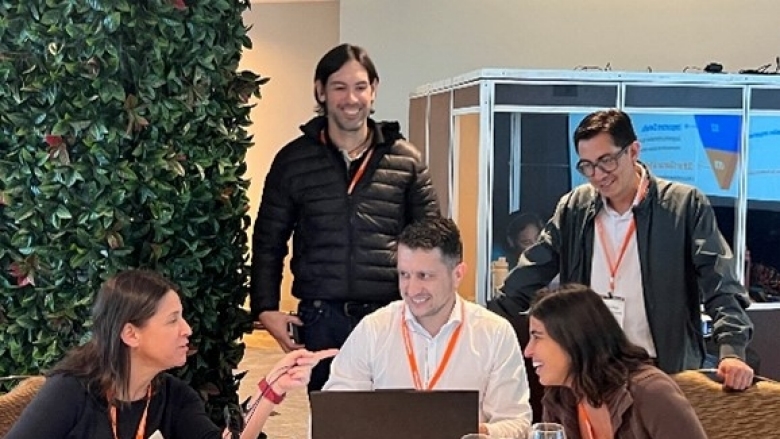
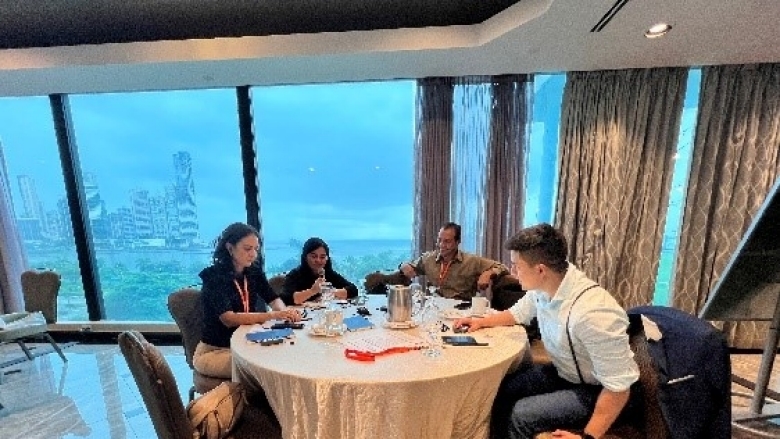
On the second day, the workshop focused on the part of media engagement that helps with risk management. The sessions included handling human-wildlife conflict crisis communication. Participants learned the steps to take when an incident occurs, to ensure that the reporting of the incident does not create more chaos and confusion. Strategies included tackling misinformation and hosting a journalist workshop to increase knowledge for reporting on sensitive information.
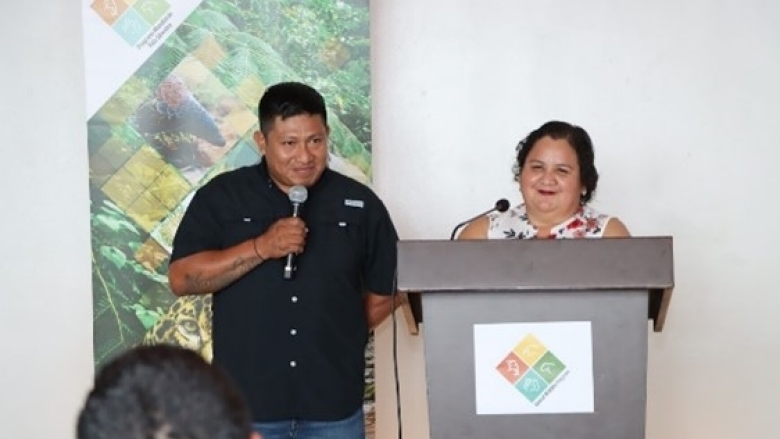
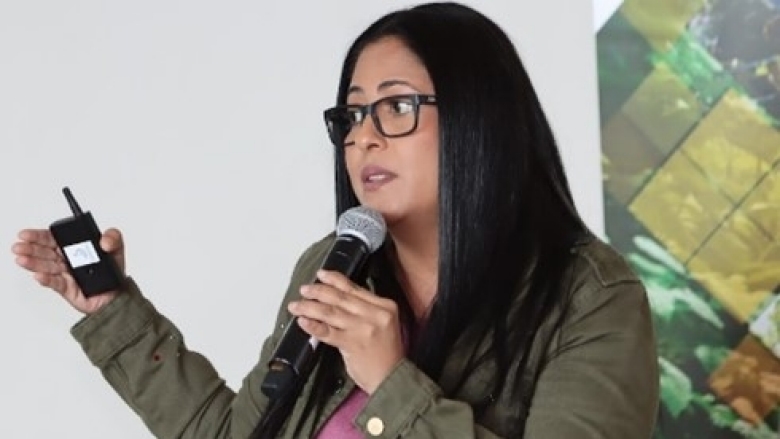
Some of the simple yet practical steps involved in crisis communication for human-wildlife conflict are to understand that accurate and timely information is critical. Therefore, most of the preparation for a crisis communication strategy needs to happen when there is no situation of conflict, i.e. in “peace time”. In addition, it's important to be empathetic while getting your message out. People may be injured, or first responders may face a dangerous situation. Establishing a protocol ahead of time ensures each stakeholder knows their role in a crisis and can help prevent the situation from escalating.
The final session ended with a re-emphasis on building productive relationships with the media and ensuring that other stakeholders such as communities, donors, and partners work together with the government to amplify media engagement.
Following the regional workshop, the GWP supported a national workshop for the Panama project to help the team with their communications plan. This workshop included a session where the GWP Panama project team listened to journalists and TV anchors from Panama’s leading news channels to learn what they see as areas where collaboration could be strengthened.
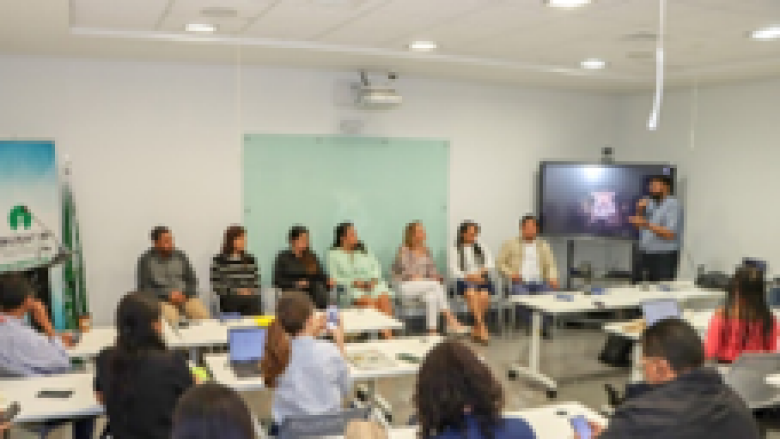
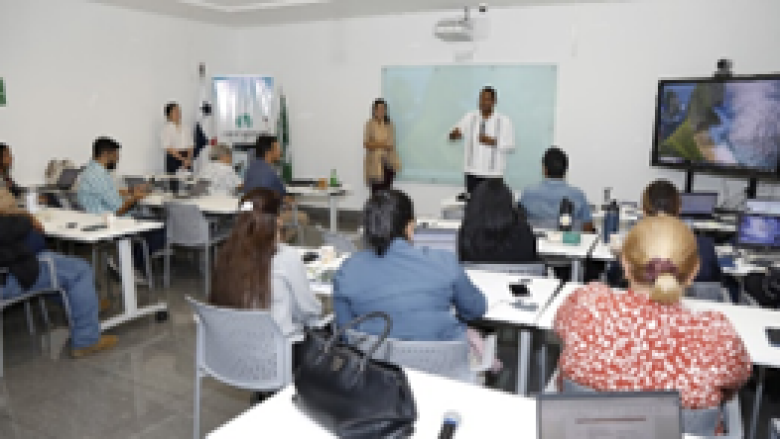
As a next step, the GWP coordination team will see how the country priorities for technical support shared during the workshop can be integrated into the GWP knowledge platform.
- Website: Global Wildlife Program
- For more GWP resources on human-wildlife conflict, visit the GWP’s webpage on HUMAN-WILDLIFE CONFLICT for videos, blogs, and publications.
- Knowledge Exchange: Media Engagement for Human-Wildlife Conflict Mitigation
- Workshop on media and its impact on human-wildlife conflict perceptions
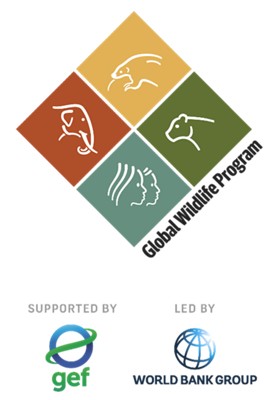
Date: September 16 - 17, 2024 ET
Location: Panama City, Panama

